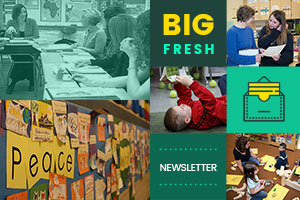Tea is the magic key to the vault where my brain is kept.
—Frances Hardinge
I’ll Drink to That!
My mom always started the day with a slow cup of tea. If I was up earlier than expected, I found my mom sitting at the end of the table with a steaming cup of tea. “What are you doing?” I asked.
“Starting the day,” she said.
It always seemed odd that her version of starting was actually sitting.
Stella Villalba once told me that coffee isn’t worth drinking if you are rushing. “All of these people with to-go cups of coffee,” she said, “don’t they realize there is more to coffee than the rush?” Stella has a joyful (and slow) routine of black coffee. It is perfect in its simplicity.
Bitsy Parks is a tea drinker with quiet rituals throughout the day. There is a rhythm to her days that is built around different kinds of tea. Black tea in the morning, herbal in the afternoon, and peppermint to close the day.
Tammy Mulligan has a hot water bubbler in her kitchen sink that delivers near-boiling water instantly for her tea. Tea bags are in a jar near the sink, and tea is moments away any time of the day. The ritual of a cup of tea bookends each day.
I am prone to hurry, even though I try to live in an unhurried way. When I push the button on my water boiler, I remind myself to breathe slowly and deeply. I stretch my fingers high above my head, and I name the color of the sky.
I place my tea bag in a mug that has a story behind it (not one that is throwaway), and as I pour the water over it, I remind myself that I do not have to rush. It is a simple ritual, and I cling to the truth that I do not have to rush my warm drink.
We all have favorite drinks, but do we enjoy them in a slow and unhurried way? Do we take the time to linger and find joy? Do we believe the truth that we do, indeed, have time to breathe and sip and think?
This week consider taking a few minutes to enjoy your favorite drink. I’m shocked that slowing down for a few minutes to sip a cup of tea has become a simple anchor in the middle of a rushed life.
Shine on,
Ruth Ayres
Editor in Chief

In this powerful essay, Leigh Anne Eck challenged herself to read a complex text and discover the authenticity of writing about reading. She transferred her experience to create meaningful opportunities for her students as they write about their own independent reading.
Sara Morris shares her insights into the way political pressure is demoralizing teachers and causing them to leave the profession.
Wondrous Words: Reimagining Writers and Writing in the Elementary Classroom (NCTE, 2025) has been released! Katie Wood Ray and Stella Villalba have lovingly revised this masterpiece about teaching writers. Make sure to check out the book website to find free videos of Katie and Stella working with students.

New members-only content is added each week to the Choice Literacy website. If you’re not yet a member, click here to explore membership options.
Tiffany Abbott Fuller gives us everything we need to use a reading strategy inspired by Roy Peter Clark. By the time you finish reading this article, you’ll be prepared to teach this strategy, equipped with sentence stems for students, specific ideas for instruction, and an anchor chart for visual reference.
One of the instructional methods we love the most in primary classrooms is interactive writing. It allows us to target the needs of our learners as individuals and reinforce the phonics rules we’ve been studying whole-class, builds community by co-creating something together, and gives us a chance to use our learning in real, authentic, and purposeful ways. Tara Barnett and Kate Mills offer simple ways you can use interactive writing to co-create your classroom space with your students.
VIDEO | Mandy Robek offers a wise approach to developing a classroom vision with her students. They begin by discussing the way they would like to feel in the classroom. Then they determine the actions that will help them feel those ways. Finally, they make a plan for what to do when they don’t feel supported in the classroom.
CHOICE NUMERACY | Mallory Messenger shares ways choral counting provides an opportunity for students to share ideas orally, process language and numbers, and bring out vocabulary within the context of looking for patterns.

New members-only content is added each week to the Choice Literacy website. If you’re not yet a member, click here to explore membership options.
Engaging in conflict is challenging, especially since there is no guarantee that we will get the results we want. Yet, it is an expected part of literacy leadership. Julie Cox inspires us to step through conversations in ways that strengthen understandings and preserve relationships.
When students are empowered to make decisions, they value the learning experience and take ownership of the outcomes. Matt Renwick turns to the concept of flow and imagines its importance for engaging readers and writers.
Stella Villalba shares her process for developing plans with teachers for intervening and for supporting individual students. Stella works with multilingual learners, and the principles are applicable to any child.
Quote It:
I suppose leadership at one time meant muscles; but today it means getting along with people.
—Mahatma Gandhi
That’s all for this week!



